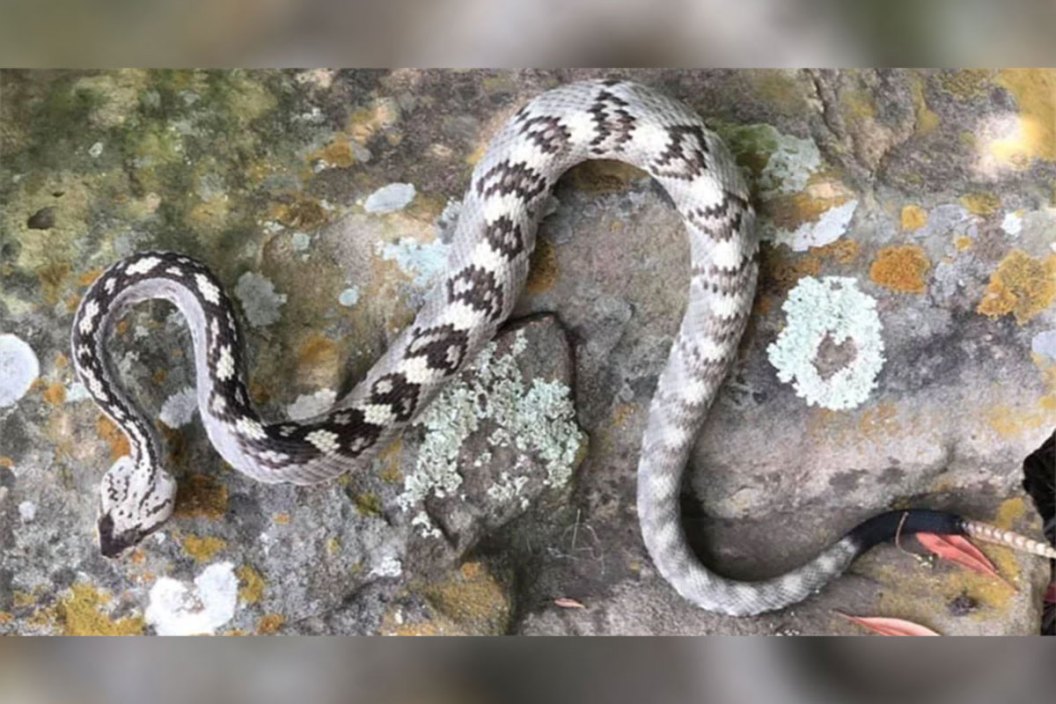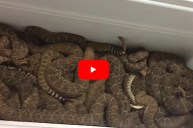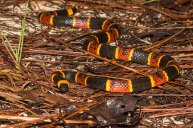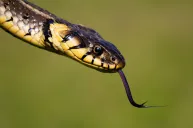It's fair to say this black-tailed rattlesnake is among the rarest ever seen in the area.
Tim Cole, owner of Austin Reptile Service, got a bit of a surprise at the beginning of June, 2019 when he encountered a black-tailed rattlesnake in Travis County, the first to be documented in the area since 1953. The snake was found in a gated community near Lake Travis, just outside Austin in Central Texas.
"One of the officers in Jonestown [Texas], who's gotten to be a good friend over the years, contacted me Monday morning and said 'Hey, I've got a rattlesnake that looks different. What do you think, and is this something you want?' And of course I called him right back and said 'Definitely!'"
The black-tailed rattlesnake is a "much calmer snake" than a western diamondback, according to Cole. That behavior, he says, helps make capturing and documenting this individual much easier than normal.
"I happened to know there's only been one black-tail documented in Travis County ever," Cole said. "And that one wasn't alive, it was dead on the road. So I got excited about that."

This particular individual "posed nicely" for Cole after he discussed the situation with the property owners. Cole's documentation device of choice is the iNaturalist citizen scientist database, an app-based animal identification and recording resource. Since the GPS coordinates of a photo are included in the data, taking the snake's picture in the same location it was found is pretty important, especially for something unseen in that spot for more than 65 years.
Cole captured the snake, then positioned it on a rock for the photo opp.
He mentioned that they're a common critter in the western portion of the state, but their typical range only reaches to about the San Antonio/San Marcos area of Texas, and they are less inclined to travel than other rattlesnake species.
"I think that probably attributes to it not being seen as much," Cole said of the venomous reptiles.
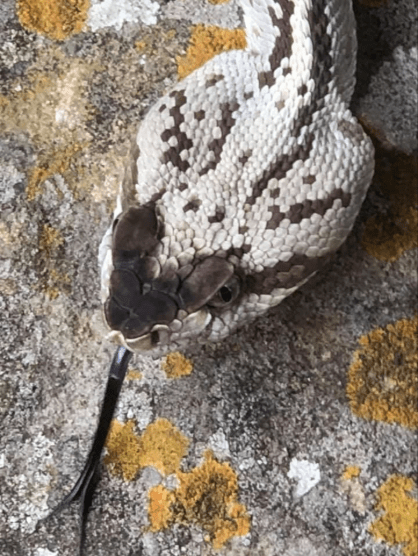
Known by the scientific name Crotalus molossus, black-tailed rattlers are also found prevalently in other places in the southwestern United States like New Mexico, Arizona, and large portions of Mexican landscape. They're a venomous pit viper, like all rattlesnakes, and are characterized as having a range of colors, with black and brown blotches mixing with gray, green, and yellow hues.
Of course, the telltale giveaway is their namesake; the coloration on the group of entirely black scales along the tip of their tail gives them away. In most cases a specimen will have black bands across its face and diagonally down to the corners of its mouth, giving the appearance of a facial mask.

They'll eat the typical snake fare: rodents and small mammals, as well as birds and other reptiles. Subspecies include the northern black-tailed snake, Mexican black-tailed snake, and Oaxacan black-tailed snake.
Cole, eager to help people understand what living with reptiles like these entails, says if he gets a call about an animal that's native and non-venomous he does his best to leave them be. The Austin Reptile Service website has a handy online field guide and identification section, and you can learn more about them there.
His go-to suggestion for folks who encounter snakes is to simply "Take a picture." Keep your distance, avoid it, and don't do anything to disturb it.
"It doesn't matter what kind of snake it is if you leave it alone!" he added.
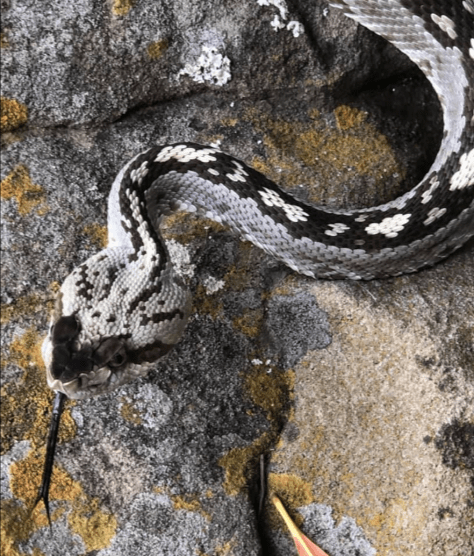
So what's this black-tailed individual's fate?
"I have it," Cole said, "and it took a lot of debate on whether I was going to put it back out in the wild or keep it. I consulted some of my peers, and they pretty much felt it would be better to be kept in captivity and used for education purposes."
He mentioned that a friend who works with the University of Texas has agreed to do blood work. When the snake passes on, it will be donated to the University and possibly displayed in its natural history museum.
"It's not like I could go out there and expect to find a female to pair up with this male!" Cole said. "I'm real happy with the responses people have made, even people that aren't into rattlesnakes. It's a pretty snake, and such a neat find, and I didn't expect it to go as viral as it did."
When something like this happens in our neck of the woods, we're naturally interested. Here's betting you are, too.
